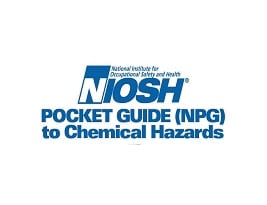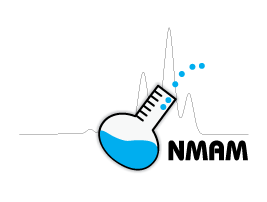Sulfuric Acid

Overview
CAS No.7664-93-9
Sulfuric acid (H2SO4) is a corrosive substance, destructive to the skin, eyes, teeth, and lungs. Severe exposure can result in death. Workers may be harmed from exposure to sulfuric acid. The level of exposure depends on dose, duration, and type of work being done.
Sulfuric acid is used in many industries. It’s used to produce other chemicals, explosives and glue; to refine petroleum; to cure metal; and in lead-based car batteries. Some examples of workers at risk of being exposed to sulfuric acid include the following:
- Outdoor workers who work in areas where coal, oil, or gas are burned
- Mechanics who handle dirty batteries
- Plumbers and contractors who come in contact with toilet bowl cleaners mixed with water
- Workers in publishing, printing or photography shops
- Fire fighters and steelworkers who are exposed to acid mists
NIOSH recommends that employers use the Hierarchy of Controls to prevent or reduce worker exposures. If you work in an industry that uses sulfuric acid, read chemical labels and the accompanying Safety Data Sheet for hazard information. Visit NIOSH’s page on Managing Chemical Safety in the Workplace to learn more about controlling chemical workplace exposures.
The following resources provide information about occupational exposure to sulfuric acid. Useful search terms for sulfuric acid include “battery acid,” “hydrogen sulfate,” “oil of vitriol,” and “sulfuric acid (aqueous).”
NIOSH Chemical Resources
Related NIOSH Resources
- NIOSHTIC2 Search results for sulfuric acid – NIOSHTIC-2 is a searchable database of worker safety and health publications, documents, grant reports, and journal articles supported in whole or in part by NIOSH.
- Documentation for Immediately Dangerous to Life or Health Concentrations (IDLH) – The IDLH documents the criteria and information sources that have been used by NIOSH to determine immediately dangerous to life or health concentrations.
- NIOSH: Managing Chemical Safety in the Workplace – The NIOSH Chemical directory provides a centralized resource for guided access to the Institute’s many significant research documents.
Selected Publications
- Criteria for a Recommended Standard: Occupational Exposure to Sulfuric Acid, DHHS (NIOSH) Publication No. 74-128 (1974) – Presents a standard to prevent the adverse effects of exposure to sulfuric acid over a working lifetime.
- Worker Notification Program: Acid mists – NIOSH conducts research to prevent illnesses and injuries in the workplace. The NIOSH Worker Notification Program notifies workers and other stakeholders about the findings of these research studies.
- Review and Evaluation of Recent Literature: Occupational Exposure to Sulfuric Acid[PDF – 3.78 MB] – Information on the effects of sulfuric-acid (7664939) exposure is presented.
- NIOSH/OSHA Occupational Health Guideline for Sulfuric Acid – Guideline intended for employees, employers, physicians, industrial hygienists, and other occupational health professionals who may have a need for such information.
Related Resources
- ATSDR Toxicological Profile for Sulfuric Acid
- ATSDR ToxFAQs for Sulfuric Acid
- OSHA Chemical Sampling Information: Sulfuric Acid
- OSHA Hazard Communication
- EPA Acute Exposure Guideline Levels (AEGLs): Sulfuric Acid
- EPA Chemistry Dashboard: Sulfuric Acid
- IPCS INCHEM: Sulfuric acid search results
- NLM Hazardous Substance Data Bank: Sulfuric Acid
- NLM Haz-Map: Sulfuric Acid
- NLM Medline Plus: Sulfuric Acid Poisoning
- NTP Report on Carcinogens (Fourteenth Edition): Sulfuric Acid
- New Jersey Hazardous Substance Fact Sheets: Sulfuric Acid
International Resources
- Canadian Centre for Occupational Health and Safety (CCOHS) Chemical Profiles: Sulfuric Acid
- European Chemical Agency (ECHA): Sulfuric Acid
- Gestis Substance Database: Sulfuric Acid
- International Agency for Research on Cancer (IARC) Monograph 100F (2012): Mists from strong inorganic acids
- International Agency for Research on Cancer (IARC) Monograph 54 (1992): Sulfuric Acid
- OECD Global Portal to Information on Chemical Substances: Sulfuric acid search results
- United Nations Environmental Programme (OECD SIDS): Sulfuric Acid
- International Chemical Safety Cards: SULFURIC ACID



